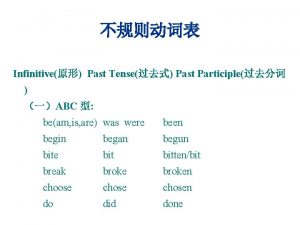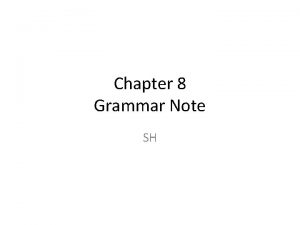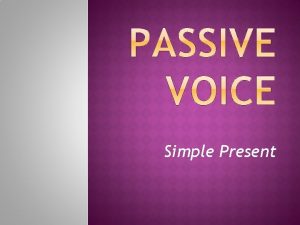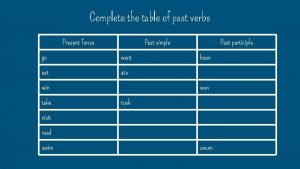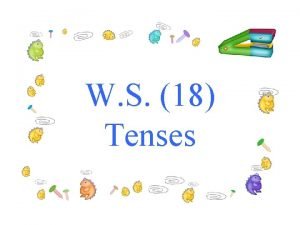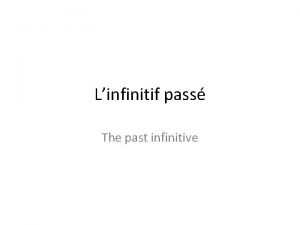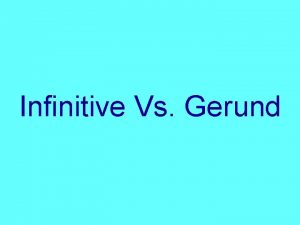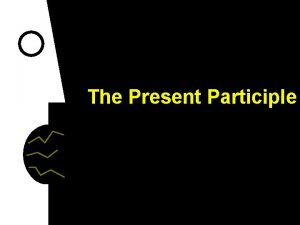Using the infinitive present participle and past participle








- Slides: 8

Using the infinitive, present participle and past participle © 2016 AQA. Created by Teachit for AQA

1. Uses of the infinitive • To give impersonal commands: mettre sa ceinture de sécurité. Toujours _______ • After other conjugated verbs: finir mes devoirs. Je dois _____ • As a noun: Voyager ____ tout seul, non merci! • To say what is in the process of happening: jouer du piano. Je suis en train de ______ © 2016 AQA. Created by Teachit for AQA

2. Uses of the present participle The present participle is often used with ‘en’. • To say what is happening at the same time: pensant à son ami. Il a écrit la lettre tout en ____ • To say how something was achieved: trichant ! Il a gagné en ____ © 2016 AQA. Created by Teachit for AQA

2. Uses of the present participle It can also be used in the following ways. • To explain a reason or cause: Ayant vu cette chanteuse en concert, je _____ connais ses chansons. • To avoid using ‘qui/que’: adorant son style. Il joue pour un public ____ © 2016 AQA. Created by Teachit for AQA

2. Uses of the present participle Don’t get carried away translating all ‘-ing’ verbs in English as ‘-ant’ forms in French! Be careful not to use the present participle where a present tense, imperfect tense or infinitive should be used. Translate: • - He is doing the cooking. Il fait la cuisine. • - She washing the car. • Speaking a foreign language is brilliant! - Parler une langue étrangère, c’est génial! Elle lavait la voiture. © 2016 AQA. Created by Teachit for AQA

3. Uses of the past participle Past participles are used to form the perfect tense but can also be used in other ways. Translate the following sentences into French. The past participle as an adjective: • • - The lost child. L’enfant perdu. All things considered. Toutes choses considérées. Remember to add agreements if needed! © 2016 AQA. Created by Teachit for AQA

3. Uses of the past participle The past participle before a noun. Translate into English: • Vu les circonstances. Considering/given the circumstances. • Tout le groupe, y compris le chanteur. The whole group, including the singer. No agreements are needed in this case! © 2016 AQA. Created by Teachit for AQA

Memory activity Which sentence has just disappeared? What does it mean? Je suis en train de jouer du piano. Toutes choses considérées. Vu les circonstances. © 2016 AQA. Created by Teachit for AQA Voyager tout seul, non merci! Ayant vu cette chanteuse en concert, je connais ses chansons. Parler une langue étrangère, c’est génial! Il a gagné en trichant. Y compris le chanteur. Il joue pour un public adorant son style.


